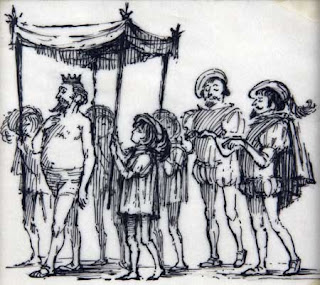To finish the book I had just left the conversations between
Marco Polo and Kublai Khan. I found out as I read them that first, Marco Polo
ratifies that every city he narrated about, he said something about Venice. He
continues explaining the reason he did this and he says: “Memory’s images, once
they are fixed in words are erased. Perhaps I am afraid of losing Venice all at
once if I speak of it. Or perhaps, speaking of other cities, I have already
lost it, little by little.” (Pg. 87)
I find this quote very powerful. Maybe because I also
believe once you talk about one memory you are letting it out thus letting it
go. Instead if you keep it to yourself you won’t forget it. This is just the
way I see things and weather it is or it is not true, when I read this fragment
I felt completely sympathetic to Marco Polo’s explanation.
Polo and the Emperor start talking about the past, memories
and dreams. Khan says that Marco Polo’s narrations of the cities are actually a
journey through his own memory. Meaning he is describing only what he knows
because he has experienced it. That is basically how every human being works,
from experience. Even when we say we don’t like looking to the past, or we want
to start again, the past is always influencing us and shaping us to do
everything. Think about it, even when we say, “I want to erase my past, start
form zero” the past is still present and it is the one making us do that
decision.
When Marco Polo tells Khan about his experience in Adelma, the second City & the dead, he sees his grandmother, his father and a fisherman he had seen when he was a kid. These characters are part of his memories, of his past. This ratifies the Khan’s words that Marco Polo is doing a journey through his memories. The past is always existing and influencing the present.
When Marco Polo tells Khan about his experience in Adelma, the second City & the dead, he sees his grandmother, his father and a fisherman he had seen when he was a kid. These characters are part of his memories, of his past. This ratifies the Khan’s words that Marco Polo is doing a journey through his memories. The past is always existing and influencing the present.










